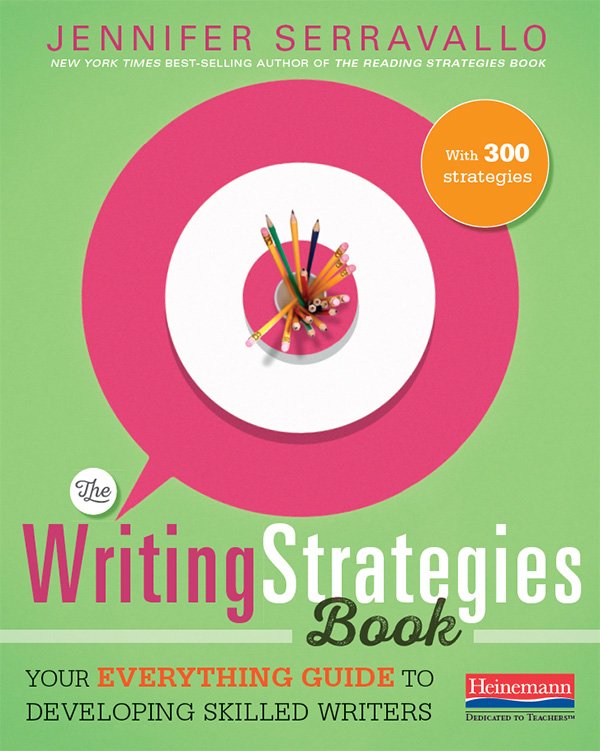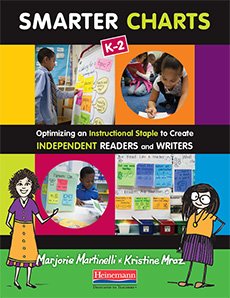
literacy toolkit
CREATE YOUR OWN
Creating a literacy toolkit was a game-changer in my teaching. I was first introduced to the idea while working as a grade-level instructional coach, where my role was primarily to support students within their classroom as part of an inclusive student support model.
I began to notice that the students I supported required similar instructional scaffolding and support, and I found myself leaning on the same teaching tools as I moved between classrooms. Being on-the-move, it was difficult to always have on hand the materials that I needed, at a moment’s notice.
The solution? Creating a literacy toolkit that contained all the teaching tools I needed, in one place, to address common instructional needs when working with students. I had at my fingertips a collection of charts, interactive mini-lesson templates and instructional materials to support a range of needs and ensure my teaching was targeted and purposeful. I was able to align my instruction with student needs without wasting precious time. My toolkit became the bridge between whole-class instruction and independence.
Whether you’re a classroom teacher, coach, intervention teacher or learning aide, a teaching toolkit is an amazing resource to have on hand as you work with students and respond to needs that arise in-the-moment.
Below I’ll share some tips for creating your own unique, personalized literacy toolkit that I can guarantee will transform your instruction and become a valuable set of tools that you will treasure and use year after year in your teaching.
Let’s start with WHAT a literacy toolkit can be…
A literacy toolkit can look many different ways. At its essence, it is a collection of tried and tested teaching tools that can be used to support targeted instruction, often with small groups or during 1:1 conferring. A literacy toolkit can also become a valuable artifact of highly impactful teaching materials that can be referred to, year after year, when planning units.
I have seen teachers create a literacy toolkit using a binder with removable pages/sleeves or alternatively a sturdy notebook can be used. I personally prefer to use a notebook!
A literacy toolkit may include:
Mini versions of anchor charts used during whole class instruction.
Excerpts of texts that can be used to demonstrate specific skills/strategies.
Demonstration pages that contain interactive elements (i.e. sticky notes) that can be used by the teacher to show students how to do something (e.g. expand a sentence, add punctuation, use context clues to understand new vocabulary etc.).
Micro-progressions that clearly show the development of specific skills (e.g. using evidence in the text to support an idea).
Small handouts/artifacts that a teacher can leave with a student to support independence while working (e.g. a sticky-note size piece of paper that provides students with 2 strategies for adding detail in their writing).
Kate Roberts & Maggie Beattie Roberts discuss the term ‘teaching tool’ in their amazing book “DIY Literacy” (which I highly recommend!). They highlight that a teaching tool focuses on the how, and “demystifies the very abstract world of reading and writing” (p. 5). “Teaching tools help organize and bring clarity to the strategies in your classroom” (p.5). As I’m sure you have experienced, it’s often after the whole-class instruction that students require the most support in applying taught strategies. A toolkit creates a bridge between whole-class instruction and independent application. It’s not always possible to have every anchor chart or micro-progression hanging in your classroom (and it’s actually best if they aren’t!), so a toolkit provides you with on-the-go, portable supporting instructional materials that you can draw upon at a moment’s notice, in response to the needs of your learners.
Are you ready? Let’s Get Started!
It’s probably important to start off by saying that your toolkit will not be created overnight.
As Maggie and Kate say in ‘DIY Literacy’, “it takes a bit of thoughtful listening and consideration as to what your kids need to identify the strategies you’ll put in your notebook” (p. 14). What I will say, however, is that once you take the plunge and get started, it’s likely that you’ll begin to fill up your toolkit pretty quickly and it won’t be long before you’ve curated an amazing collection of go-to resources!
So, first of all, you’ll need to decide whether you want to use a notebook or a binder/folder. I personally prefer a notebook, as I don’t like the feel of a bulky binder and plastic sleeves. But that’s just my personal preference!
Here are a few quick pros and cons that you may like to consider:
If you choose to use a notebook, an art/sketch notebook is ideal. Make sure the front and back covers are sturdy to protect the inner pages, and that the pages are thick and durable.
The next thing you will want to do is gather two important supplies: pens and sticky notes!
If you don’t love stationery, this is probably going to sound ridiculous, but choosing the right type of pens is important! In my experience, you can’t go past a set of sharpies or flair pens - just make sure if you’re using a notebook that the color doesn’t bleed through to the page below. Whatever pens you choose, make sure they are easy to write with/read and have a few color variations so you can use color strategically on each page to highlight key words/phrases.
You may be wondering why sticky notes are so important. Using sticky notes will make your teaching tools interactive and reusable. Think about where you can create space for students to add their own responses to practice applying a skill/strategy in real-time. When you’ve finished working with that student, the sticky note could be left with him or her as a reference point, and you’ll be able to use new sticky notes with another student.
And now, the most important part, creating the tools! This can feel a little overwhelming - where do you start? The best thing you can do is think about your current unit. What have you been teaching? What is a need that you are noticing as you work with students 1:1 or in small groups? What might be a tool that could address that need? How could you make that tool interactive?
I think probably the most important tip I can give you here is this: don’t feel the need to reinvent the wheel. Lean on the amazing work of others that has already been done, and adapt that work to suit your specific context.
Most of my own personal literacy toolkit has been created using inspiration from a few key authors, which I’ll reference below. Sometimes, a quick google image search of anchor charts is enough to spark an idea! I’ve added a link below if you’d like to see some pages from my own literacy toolkit!











